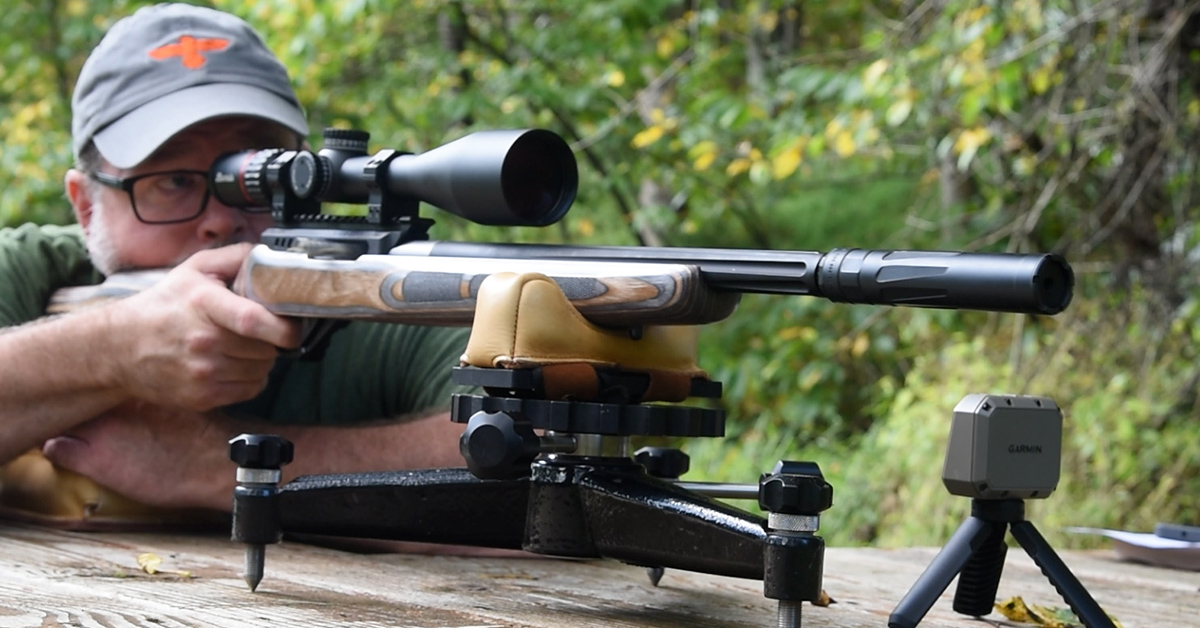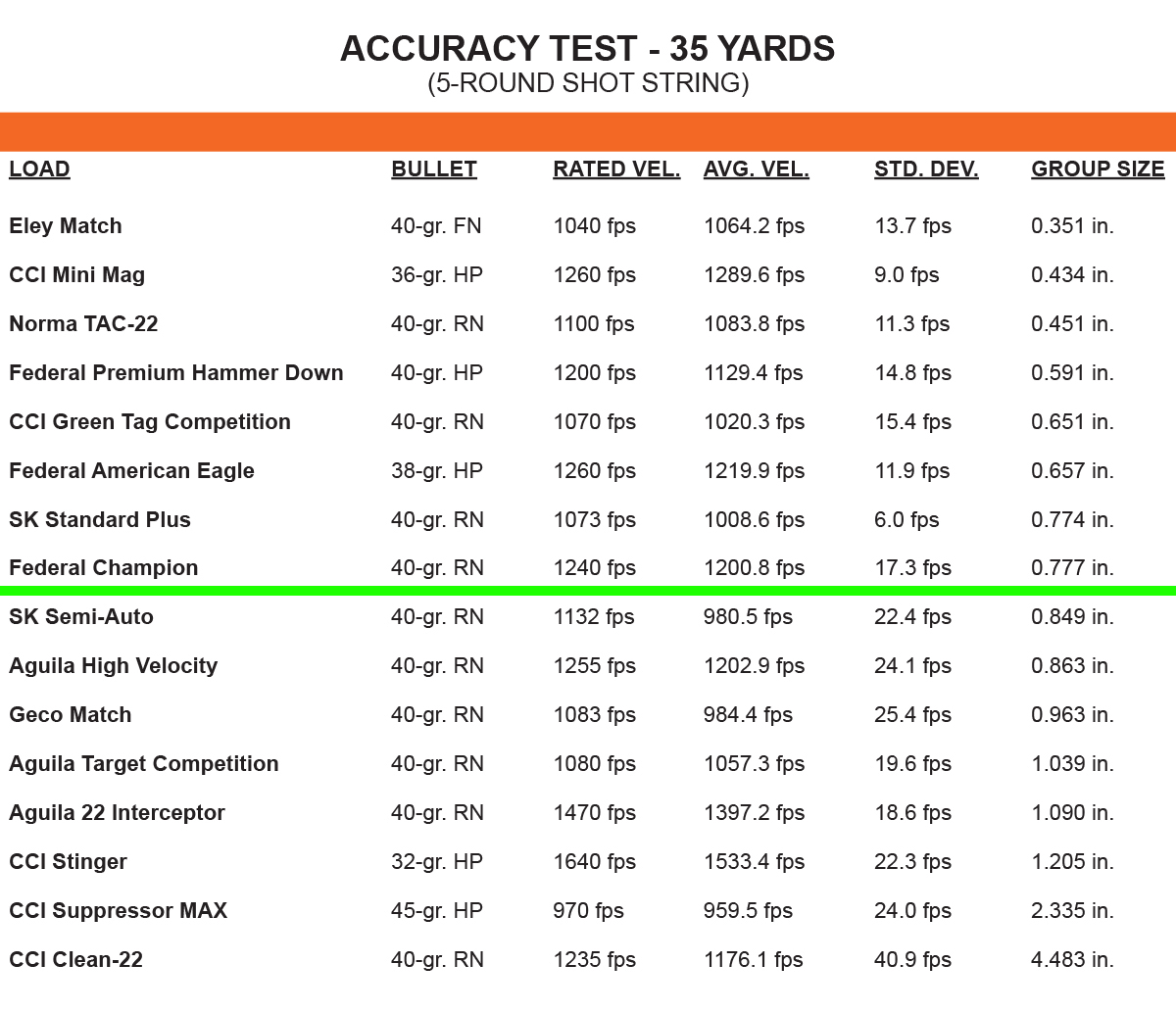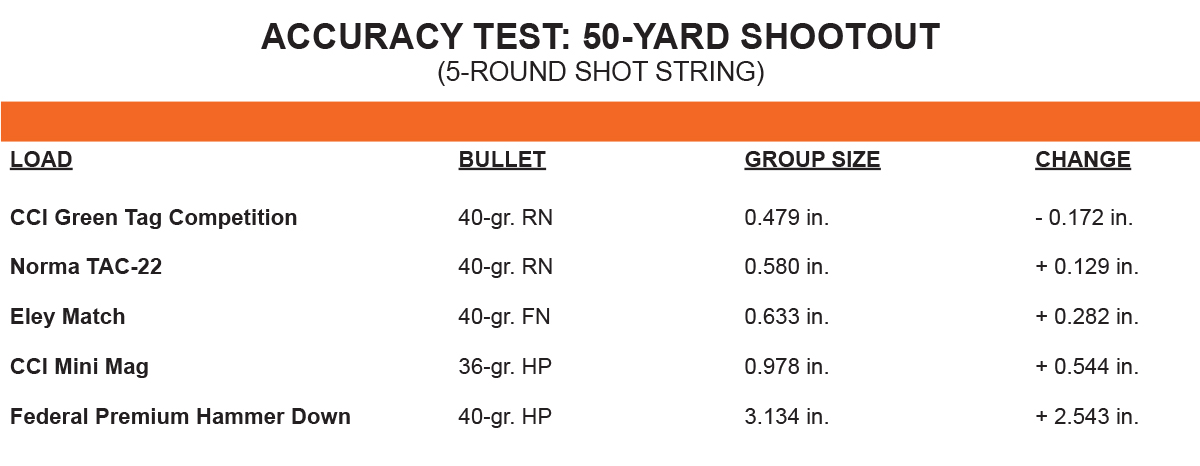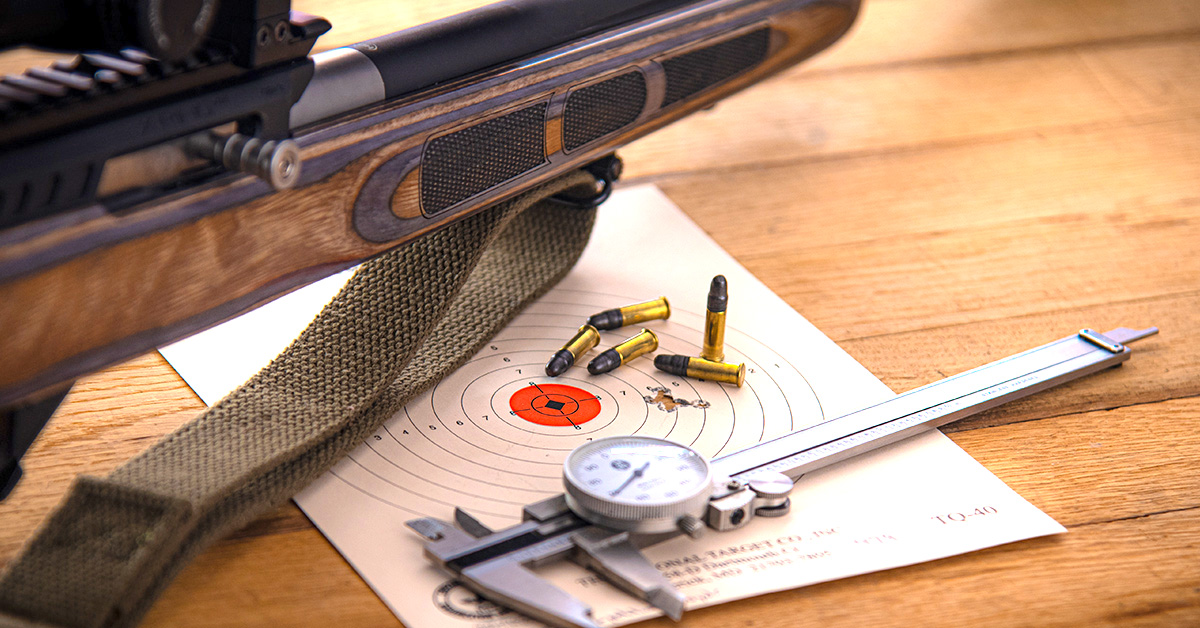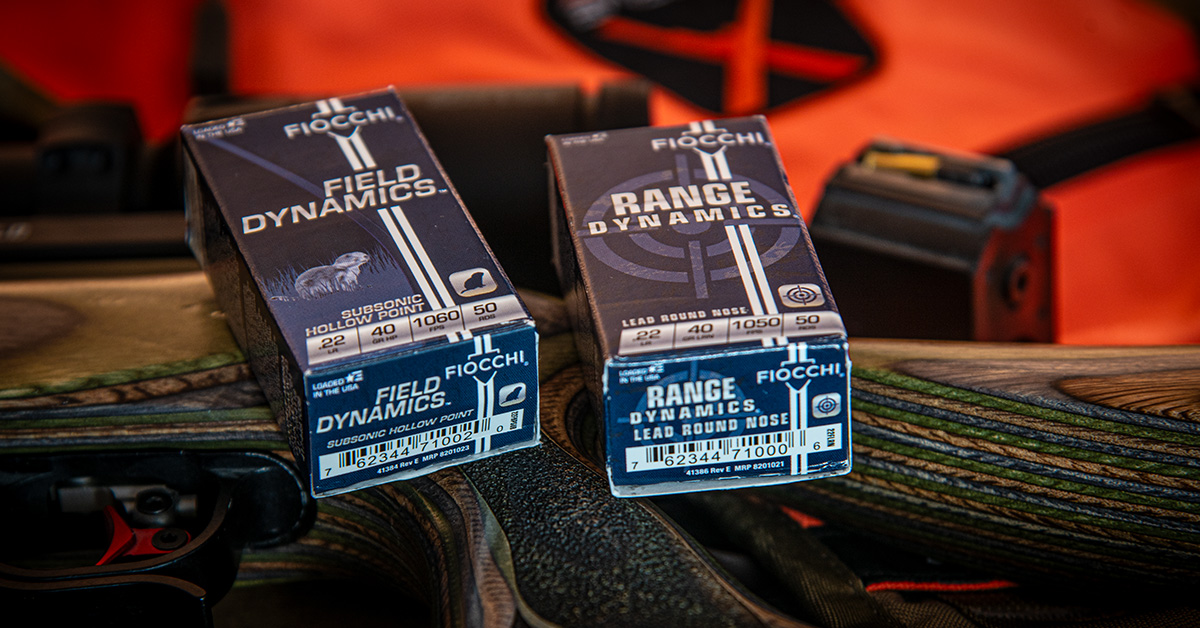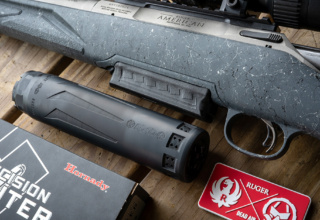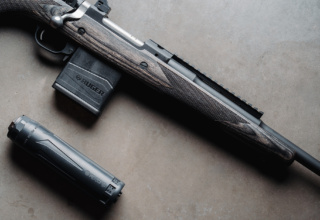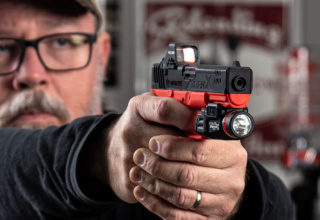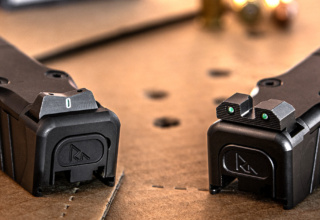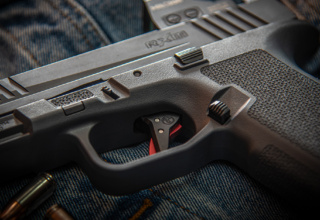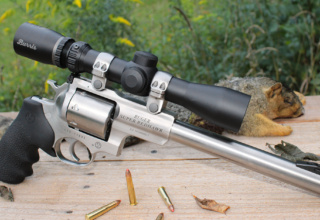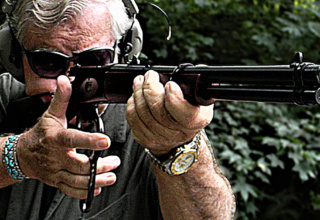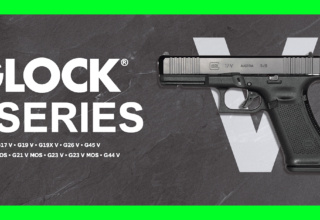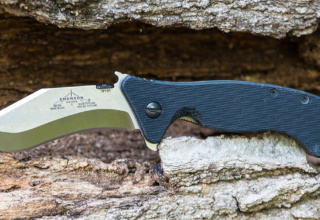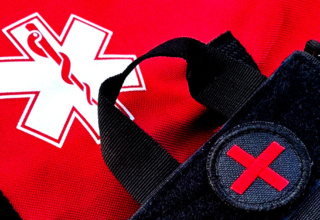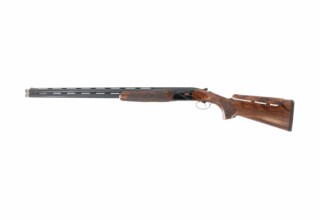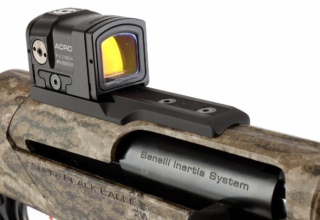If you are dreaming of tight groups and wondering how to refine your 10/22’s accuracy, here’s the answer…
by Rob Reaser
When we wrapped up Part 1 of this two-part series on building a DIY precision 10/22 for hunting, we explained that the “build” was only half of the equation. The next step — not only for a do-it-yourself gun but for any firearm — is to conduct an extensive load test to determine which ammunition performs most consistently out of that specific gun.
That is exactly what we did with our “ultimate squirrel 10/22.” You can check out Part 1 to see the components we used to build the gun and the step-by-step process involved in case you want to give it a try yourself. It’s really easy. And for a live-action look at how our testing went, check out this video…
The sometimes-volatile relationship between ammunition and firearms is a concept that too few shooters seem to grasp. For most, ammo is ammo. If a gun won’t print small groups at the desired distance, the blame game is sure to begin. Some folks will crank on the ammo, some the optic, while others will point an angry finger at the gun. Rarely does the shooter acknowledge that their marksmanship skills may leave much to be desired.
All of these could be the contributing factor(s) to dismal group sizes. In short, the variables leading to accurate shooting can be numerous. That being the case, those with a tendency toward obsessive compulsiveness in their shooting endeavors find many rabbit holes to pursue. But you must draw the line somewhere, and the best place to do that is simply to find the best load, through testing, that your gun will shoot most consistently.
The Accuracy Basics
We start with the assumption that the barreled action and all its supporting systems — trigger, stock, optic, et cetera — are built with quality materials through precision engineering. In other words, the hardware is as good as it can be. That leaves the ammunition.
There is no question that a lot of ammunition on the market today does not hold to, shall we say, optimal standards. Another way to put it: there is a lot of junk ammo on the shelves. In the rimfire world, which is where our focus is for this article, a chronograph check of standard deviation amongst various loads can be quite extreme.
In the test conducted for this project, we found among 16 different loadings standard deviations ranging from a low of 6.0 fps up to 40.9 fps. A previous test we did had one load with standard deviation at an eye-popping 121.6 fps! With that kind of inconsistency in velocity, tight groups will never be more than wishful thinking.
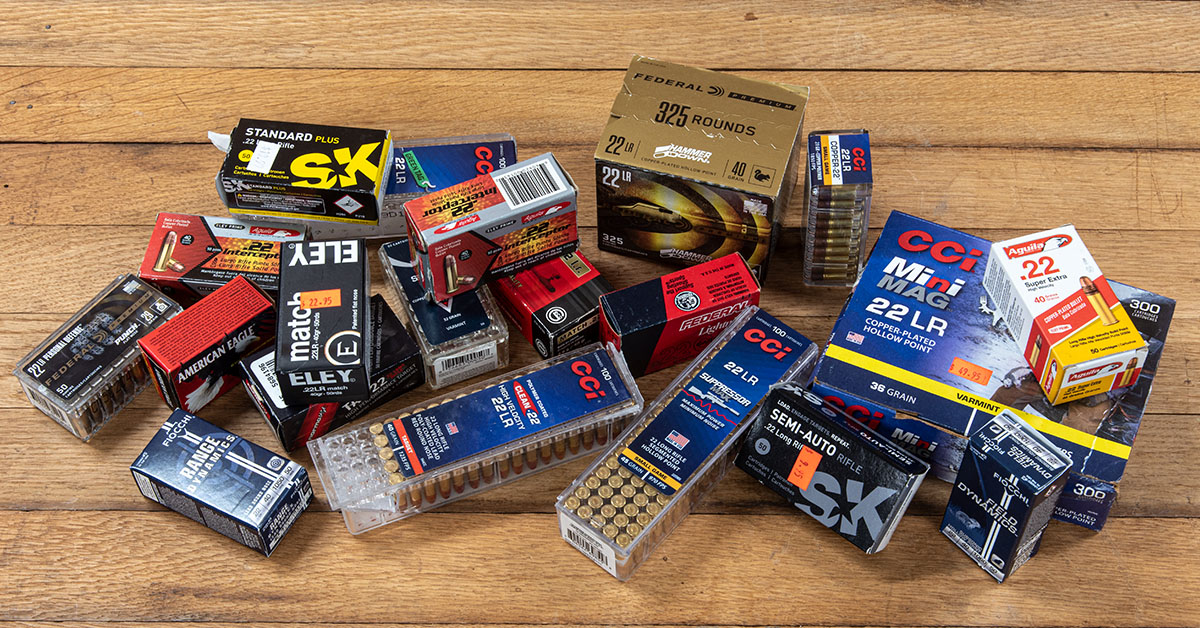
For the sake of argument, though, let’s consider that an ammunition loading is as consistent as is humanly possible. The powder charge is consistent, pressure is consistent, primer performance is consistent, the bullets are precisely formed to exacting tolerance, et cetera. Everything is perfect.
Now, let’s take that perfect .22 LR loading and run it through that top-shelf, precision rifle. The natural assumption would be that super-tight groups will be the result, right? Yes. Is that what we should expect when we start pulling the trigger? No.
Why not?
Because every barrel will react differently to a particular load. I know it’s kind of hard to wrap your head around that, but it is truth. Subtle nuances in a barrel’s design, muzzle crown profile, rifling, material construction, torque application, and, especially, internal molecular structure can and most likely will influence group size from one loading to the next.
There are a few things you can do to your 10/22 to tweak its performance to shoot tighter groups with a particular loading, such as adjusting the action screw torque or experimenting with a pressure point. You can also have your barrel cryo-treated to stabilize the molecular structure. But all this is really just nibbling around the edges. To get the optimal performance out of your 10/22, you must experiment to find the load that the barrel likes the best. Handloaders do this all the time, but you can’t handload rimfire ammo, so the only solution is to test one loading after another until you find the one that gives you what you are looking for.
Accuracy Hunt: A Real-World Example
With our ultimate squirrel gun build behind us, we next had to find the .22 LR loading that would have the rifle say, “Thank you, more please!”
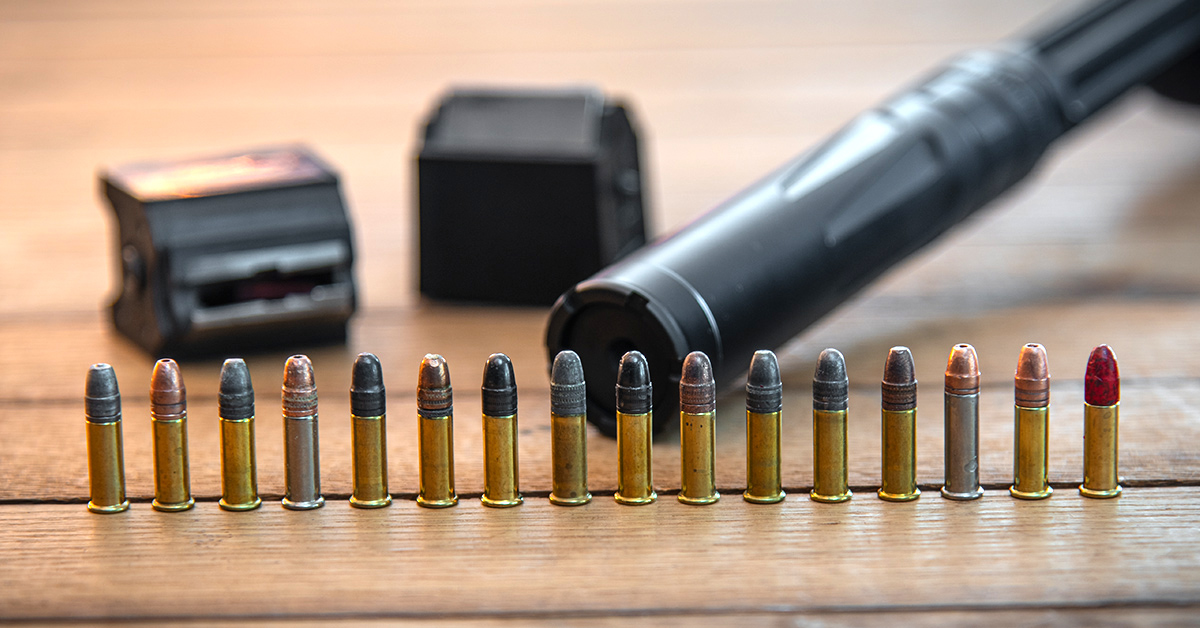
There were nearly 25 different loadings in the shop. Some I’d had for nearly a decade, so I left them on the shelf. Some were no longer in production, so they were no-go as well. In the end, I selected 13 loads I hand on hand and bought three additional “high-end” loads from a couple of local dealers. In all, 16 different loadings would comprise the proof test of what I’d come to nickname the Sqwacker Blaster 5000. The question looming: how well would it blast?
I set what I thought would be an appropriate performance level. Given the quality of the components used — Tactical Solutions X-Ring HD barrel and X-Ring VR Gen 2 receiver/bolt, Timney Calvin Elite 2-stage trigger, Boyds Rimfire Hunter gunstock, Burris Fullfied scope, and Dead Air RXD 22Ti suppressor — I figured I should be able to achieve sub-3/4-inch groups at 50 yards out of at least a couple of the off-the-shelf test loads. That is a somewhat ambitious goal for a short-length, lightweight, semi-auto rimfire developed for small-game hunting, but I was confident that the Sqwacker Blaster 5000 would be up to the task.
Test Stage One
The testing protocol involved a two-stage elimination. For the first stage, I set the targets at 35 yards. I chose this distance because that is about as far as I would typically shoot at a squirrel. Any load shooting within 1/2-inch at that distance would get the job done with ease. Five rounds of each load would be sent downrange to establish group size, with velocities and standard deviations recorded with a Garmin Xero C1 Pro chronograph. Here are the results:
To my delight, three of the 16 loads came in under a 1/2-inch, with the best group coming from the Eley Match at 0.351 inches.
Notice, though, the relative standard deviations between the first eight loads (smallest group size) and the bottom eight loads (largest group size). The best-shooting loads have the lowest standard deviation. Their velocities are more consistent, and consistency is the primary key to accuracy.
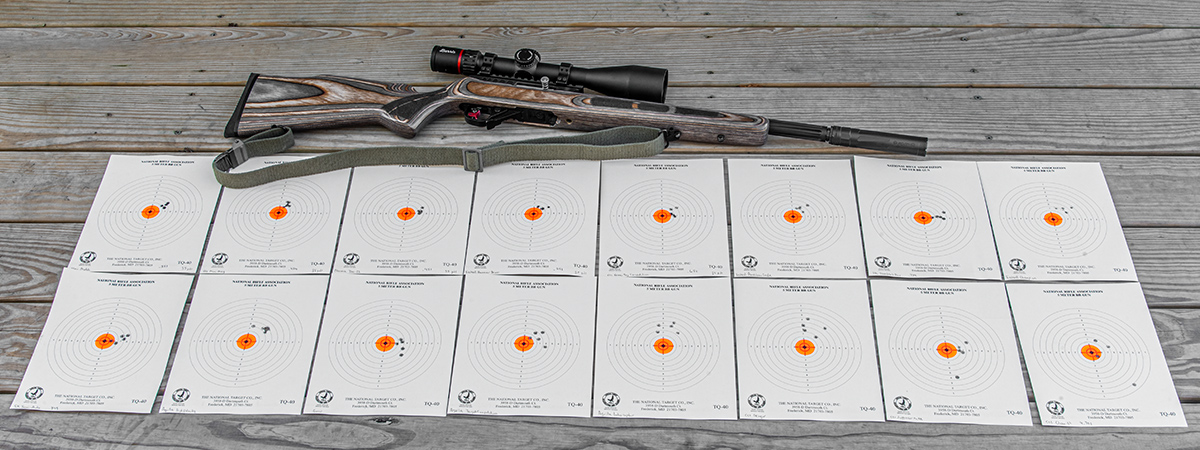
If you have a loading that sends bullets downrange at significantly different velocities, group sizes will always be chaotic. And those differences in velocity are likely to mirror variations in chamber pressure. All this inconsistency means the barrel’s harmonics will probably be different from one shot to the next. This results in bullets going here, there, and everywhere except where you want them to go.
Test Stage Two
For the next phase of testing, I wanted to move the targets to 50 yards, as this seems to be the standard distance by which the hardcore rimfire fans evaluate their high-end rifle and ammunition performance. To do this, I selected the five loads that gave the smallest group size in the first test stage. I also gave the barrel bore a quick cleaning, followed by five fouling shots. The results:
As you can see, three of the loads stayed under my target 3/4-inch group size, with one, CCI’s Green Tag Competition, coming in under 1/2-inch.
This test proved that the gun is certainly capable of sub-half-inch groups with the right ammo. Taking that win, I could see if even tighter groups could be had by adjusting the action screw torque a few in/lbs one way or another, as well as adding upward pressure to the barrel (pressure point). I could also gather up another group of ammunition and see which of those would shine the brightest.
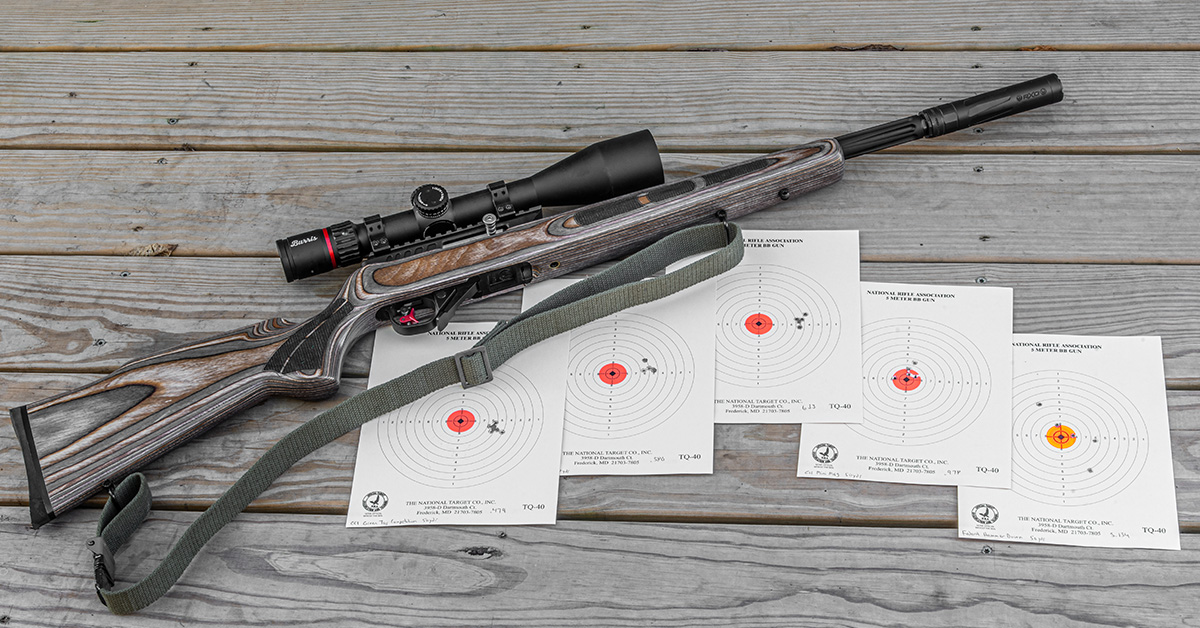
Another thing this final test showed is that you should expect the unexpected. For example, the CCI Green Tag group size actually shrunk by 0.172 inches when the target moved from 35 to 50 yards. How? You got me. On the flip side, the Federal Premium Hammer Down absolutely soiled the sheets, jumping 2.543 inches in group size (watching this play out in the video above is worth your time). Again, who knows why? This stuff just happens.
The point of all this, though, is to stress that you must test a variety of loads in order to find what shoots best out of your rifle. Using this example, if you were to have randomly purchased the eight poorest-performing loads and tested only those, you would conclude wrongly that something is terribly off with the gun or maybe the scope. That’s why we always stress not to bash your equipment or your ammo until you have thoroughly tested them. Ammo that shoots poorly in one gun may be a hero in another.
You don’t know until you pull the trigger.
The Missing Load
Much to my dismay, a friend sent me a robust sampling of Fiocchi .22 LR from the company’s Range Dynamics and Field Dynamics line. I say “to my dismay” because the ammo arrived after my big range testing day, and deadlines meant I couldn’t include it in this performance test.
Truth be told, I didn’t know Fiocchi even made .22 LR until I was discussing the results of this test with my hunting buddy and he mentioned it. I’ve been a big fan of the brand for several years, finding much success with their centerfire rifle, handgun, and shotgun ammo, which is why we use so much of it for testing here at Shoot ON.
Range Dynamics is the target load, tapping a 40-gr. round nose bullet and sending it downrange at a suppressor-friendly 1,050 fps. For small-game hunting, Fiocchi offers their Field Dynamics load. There are two .22 LR loadings in this series, including 38-gr. copper-plated hollow point (1060 fps) and 40-gr. copper-plated round nose (1250 fps).
I’ll give both a try before I hit the woods this year.

